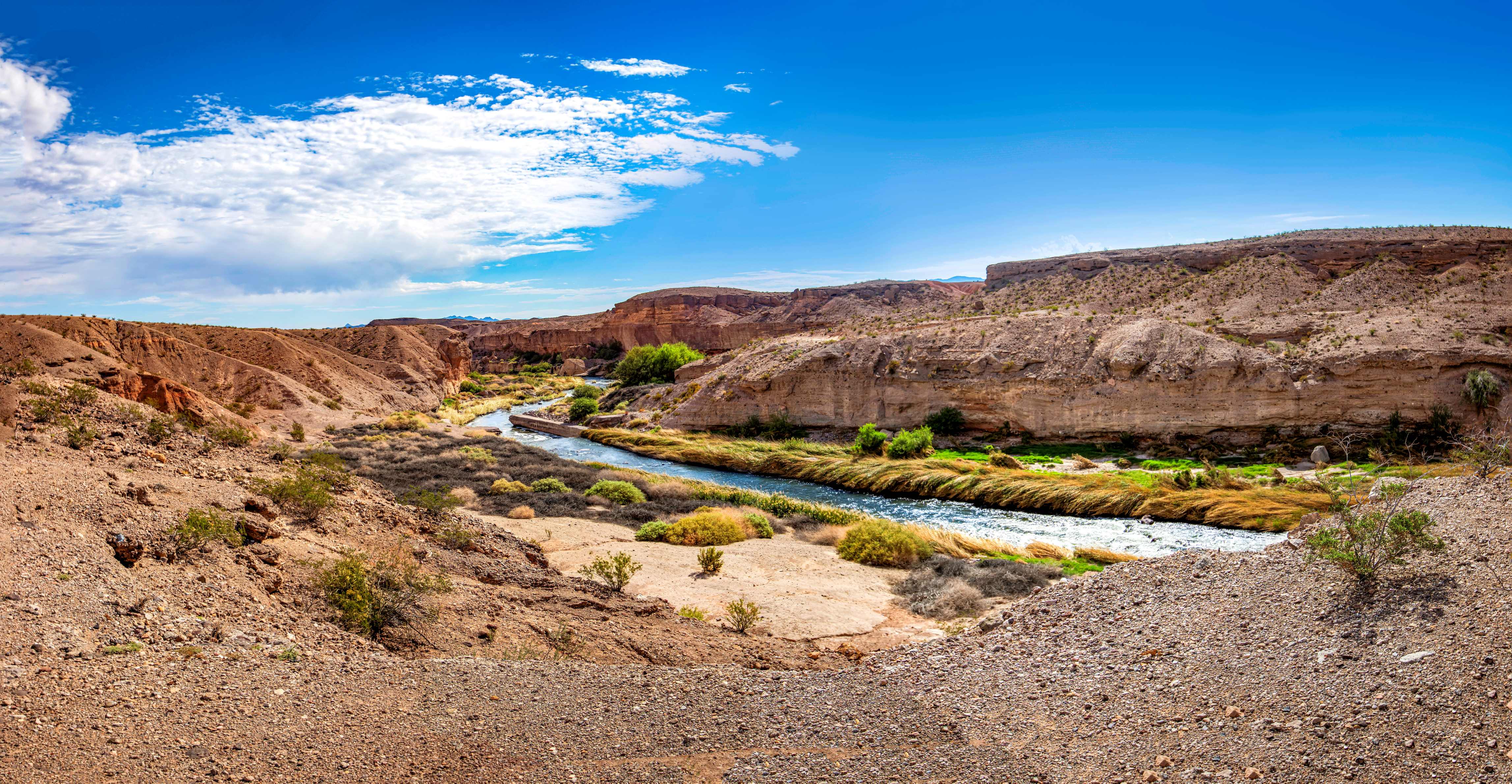Bipartisan Infrastructure Law to fund 18 projects in eight states that will improve aquatic habitats
Media Contact: Interior_Press@ios.doi.gov
For Release: Dec 19, 2023
 Overlook of Las Vegas Wash
Overlook of Las Vegas Wash
WASHINGTON — The Department of the Interior today announced more than $51 million in funding from President Biden’s Investing in America agenda for 18 projects in eight states that will restore and protect aquatic ecosystems.
Crucial funding from the Bipartisan Infrastructure Law for the Bureau of Reclamation’s WaterSMART program will support the study, design and construction of collaboratively developed ecosystem restoration projects that provide widespread regional benefits and improve the health of fisheries, wildlife and aquatic habitat through restoration and improved fish passage.
“Through President Biden’s Investing in America agenda, we are advancing nature-based solutions that benefit local water supplies, and the wildlife and habitats that support them,” said Secretary Deb Haaland. “The Interior Department continues to advance water solutions that are environmentally and economically sound for the American West.”
“The benefits of these projects are far-reaching in terms of climate resilience and ecosystem restoration benefits,” said Reclamation Commissioner Camille Calimlim Touton. “The work to restore and protect the habitat for fish and wildlife also helps to improve water quality and mitigate impacts of drought and potential flood events.”
Commissioner Touton made the announcement during a visit to the Las Vegas Wash project outside Henderson, Nevada. As part of today’s announcement, the Southern Nevada Water Authority will receive $20 million to create a wetland and other habitat within the Lake Mead National Recreation Area. The project will improve water quality and help protect the spawning area for the endangered razorback sucker in Las Vegas Bay. The Wash is a crucial link in the Las Vegas Valley watershed, channeling more than 200 million gallons of urban runoff, highly treated effluent and shallow groundwater to Lake Mead.
President Biden’s Investing in America agenda represents the largest investment in climate resilience in the nation’s history and is providing much-needed resources to enhance Western communities’ resilience to drought and climate change. Through the Bipartisan Infrastructure Law, Reclamation is investing a total of $8.3 billion over five years for water infrastructure projects, including rural water, water storage, conservation and conveyance, nature-based solutions, dam safety, water purification and reuse, and desalination. Over the first two years of its implementation, Reclamation has selected 421 projects to receive over $2.9 billion.
The projects selected under this round of the Aquatic Ecosystem Restoration Program are:
California
East Bay Municipal Utility District, Mokelumne River Floodplain Project: Improving Conditions for California’s Central Valley Anadromous Fisheries (Task A: Study and Design)
Reclamation Funding: $650,000
The East Bay Municipal Utility District will work with local landowners to complete the study and design of two 25-acre floodplain restoration projects which, once constructed, will inundate roughly 50 acres of off-channel rearing habitat benefitting federally listed, Fall-run Chinook salmon and steelhead trout.
Sonoma County Water Agency, Eel River at Cape Horn Dam Fish Passage Improvement Project (Task A: Study and Design)
Reclamation Funding: $2,000,000
The Sonoma County Water Agency will study and complete design for fish passage enhancements at the Eel River’s Cape Horn Dam and explore options for continued trans-basin diversions from the Eel River into the neighboring Russian River. The Cape Horn Dam is part of the Potter Valley Project, located in Mendocino County, California, which has been diverting water from the Eel River into the Russian River watershed for more than a century. The Potter Valley Project has played a crucial role in supplying water for agriculture, consumptive use, and instream flows for aquatic ecosystems, however, native populations of federally listed Chinook and Coho salmon and winter Steelhead in the Eel River have declined substantially.
